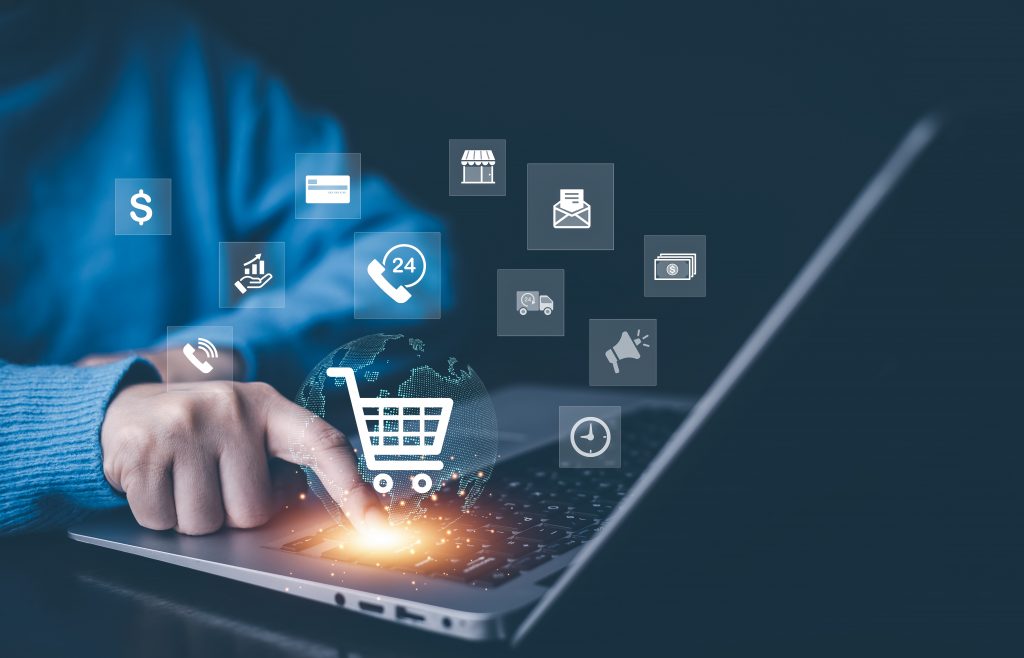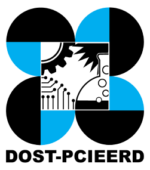In the previous decade, the development of eCommerce has gone far. It has grown to be an indispensable part of our daily life, particularly during the COVID-19 pandemic. The worldwide online retail sector is predicted to exceed $6.35 trillion by 2027, and it’s no wonder that companies are gravitating to eCommerce to increase their consumer base and income. With this, we’d like to share some of the trends and forecasts of eCommerce in the Philippines in the next few years.

Status of eCommerce in the Philippine Market
Sales from eCommerce in the Philippines are likely to increase further and reach P969 billion by 2026, owing to rising consumer demand for digital platforms, according to the statistical data of GlobalData.
Thanks to strong online and mobile device prevalence, the Philippines is one of Southeast Asia’s fastest-expanding eCommerce marketplaces. In addition, the widespread COVID-19 has expedited the transition in customer choice from physical to digital avenues. According to the study, cash payments via credit and debit cards remain the preferred payment method for online shopping in the Philippines, comprising 51 percent of the sales during the past year.
The Volume of Digital Users in the Philippines
Between 2022 and 2026, internet users are predicted to expand at a CAGR of 4.2%, hitting 91.0 million in 2026. By 2021, 51.3% of homes have connectivity to the Internet, with 38.3% having broadband access to the Internet. Through 2026, web and broadband connectivity are predicted to be at 61.8% and 51.1%, correspondingly.
Around 2021, the following percentages of families owned an electronic device: mobile phones (92.4%), cell phones (71.5%), home computers (26.7%), notebooks (19.3%), and tablets (17.3%). From 2022 to 2040, an increase of 8.8% is predicted for digital presence and eCommerce in the Philippines.
Sizes of eCommerce Businesses
Small Business
Small businesses are private companies, partnerships, or corporations that offer goods or services, generate less revenue, and hire fewer people than huge international organizations. According to Statista, there were 996.7 thousand micro, small, and medium enterprise (MSME) enterprises in the Philippines in 2020, an uptick from the prior year’s number.
Startups
Based on the 2023 Global Startup Ecosystem Report (GSER), Manila’s startup community has grown to USD 3.5 billion. The startup ecosystem’s worth increased by 85% compared to the USD 2.1 billion in the 2022 GSER. Based on the Department of Trade and Industry (DTI), the Philippines has grown into a desirable location for startups due to the favorable conditions it provides and its talented people.
According to Trade Secretary Alfredo Pascual, the Philippine startup ecosystem is accelerating, featuring a 20% increase in transaction measures, demonstrating capitalists’ confidence and belief in the Filipino startup scene as a potential venture site.
Types of Products Sold in the Online Marketplace
Physical Products
Any tangible thing which can be traded or bought either offline or online is considered a physical item. These eCommerce business entities are often primarily B2B or D2C companies. However, some B2B suppliers also sell physical items.
Digital Products
These goods can be electronic documents, such as templates and tools, or they might be downloaded items, such as reproducible works of art, music, or graphics.
Service Products
Offering services requires providing expert service for a fee, including writing for hire, social media advertising, or virtual workshops.
Forecast of eCommerce
As reported by Statista, eCommerce revenues are estimated to expand at an average 14.56% annual pace, culminating in an anticipated market value of $1,365.00 billion by 2025 – proving that eCommerce is not a passing trend.
Considering the rise of omnichannel purchasing activities, online shoppers are entitled to be ready to investigate, discover, purchase goods, and purchase across multiple devices and business channels.
As a whole, we must keep in mind that eCommerce continues to be relatively young in the context of commerce. The future provides limitless possibilities. However, its success and sustainability will be primarily determined by customer choices in the years ahead.

B2B eCommerce
The B2B eCommerce market is rapidly expanding, and purchasers possess enormous expectations. Let’s examine the many sorts of B2B eCommerce that are prevalent in the Philippines as well as the global market. With the pandemic acting as an inducement for transformation and a growing percentage of millennials joining the B2B arena, consumer demands are growing quicker than ever, and B2B enterprises must keep up.
Business-to-business retailers are left to comprehend the current B2B buyer’s demands in the middle of a shifting market. However, if your B2B company is locked in legacy systems, embarking on a digital transition might be your biggest blow of opportunity yet.
Digitized Shopping Preference
Cold contacting, offline marketing, and manual transactions are becoming obsolete. Customers want these same advantages from B2B merchants, just as they do from B2C sellers, and they get more irritated with those that do not give them.
Eighty percent of B2B purchasing choices are influenced by a buyer’s indirect or direct experience with a company, and 87% of B2B buyers are willing to pay more for a supplier with a superior eCommerce platform and experience, versus 81% in 2020 and 74% in the previous year.
Wholesale eCommerce
Firms frequently purchase things wholesale at a reduced cost and resell them at a higher price, and the commodities are generally obtained straight from the supplier or importer. This type of B2B, known as wholesale, is also known as the retailing of items to various different businesses.
Retail B2B models may be found in various sectors, spanning shopping centers, food service, construction, and medicine, to name a few. Initially, wholesale B2B transactions are conducted over the phone, by email, or through document request applications.
Digitized Procurement
One factor for the growth of the B2B eCommerce sector is the conversion of B2C. While it is feasible to make the switch, there will be an adjustment period. Transactions between businesses are often broader than B2C ones, and B2B sales frequently rely on established partnerships with suppliers.
Socioeconomic Profile of eCommerce in the Philippines
In 2021, the eCommerce trends in the Philippines showed economic system overall value-added was US$376.3 million. The growth rate of the industry is predicted to remain robust, notably in retail, food and beverage, and B2B eCommerce. Further expansion is predicted to be fueled by improved technology, more online payment use, and greater consumer expenditure.
Digital Trends of Philippine eCommerce
Artificial Intelligence Integration
Machine learning and artificial intelligence are now starting to disrupt the online retail sector and are expected to continue to do so over the period of five years to come. Companies will be able to provide tailored, personalized customer support throughout the clock as chatbots powered by AI and digital assistants become increasingly widespread. Artificial intelligence algorithms will also assist firms in analyzing client data and recommending customized products.
Social Media Inegration
Social media is now more merely a place to share images and communicate with friends. Thanks to the advent of social commerce, it has become feasible to purchase things straight from social media sites such as Instagram and Facebook. Based on a Global Web Index survey, 54% of social media users investigate items on these websites, and 28% had purchased straight from a social media site. Businesses that can use social media efficiently as an avenue for marketing will have a big edge in the eCommerce sector.
Subscription Integration
Subscription-based offerings have grown in popularity in recent years and are projected to continue over the course of the next five years. Based on a McKinsey report, the subscription eCommerce market has risen more than 100% annually over the previous five years. Subscription offerings may help organizations create long-term client connections by providing customers with a simple and consistent way to acquire things.
Some eCommerce trends in the Philippines have platforms that are still traditional and haven’t adopted new technologies for digitized shopping. In particular, we can rely on the services of Shoppable Business. This is a B2B eCommerce platform that helps both buyers and sellers come together in a centralized system.
Why Become a Seller in Shoppable Business
- Access to a large customer base – giving businesses the opportunity to expand their reach and increase sales
- Increased visibility and brand awareness – a platform for businesses to showcase their products/services and potentially attract new customers
- BNPL (Buy now, Pay later) – grow your ASP; buyers/companies can apply for a loan up to ₱150,000.00
Why Become a Buyer in Shoppable Business
- Wide product selection from different categories – a one-stop-shop solution for businesses’ procurement needs
- Save company time and money – Customized orders, RFQ for specific quantities, bundles, configuration, Track their orders, view purchase history.
- Need it now but limited budget – BNPL apply and get up to ₱150,000.00

Looking at eCommerce trends in the Philippines, it seems that buyers have grown accustomed to the ease of online shopping, and the advantages earned by online retailers are projected to be long-lasting. Businesses that can remain ahead of the developments in the eCommerce market will be well-suited for achievement over the years to come. Firms are able to establish lasting connections with consumers and expand profits in this rapidly growing sector by emphasizing artificial intelligence, social channels, quick shipping, service subscriptions, customized service, sustainability, and online marketplaces.
When you’re finally ready to take the next step and join the industry as a new entry in procurement, you can start with Shoppable! Be a vendor, manufacturer, buyer, or member of a company; you’ll find that Shoppable’s tools and features are fit for your business.









